Abstract
This article describes a case-mix measure for application in ambulatory populations. The method is based primarily on categorization of diagnoses according to their likelihood of persistence. Fifty-one combinations (the ambulatory care groups or ACGs) result from applying multivariate techniques to maximize variance explained in use of services and ambulatory care charges. The method is tested in four different HMOs and a large Medicaid population. The percentage of the population in each of the 51 categories is similar across the HMOs; the Medicaid population has higher burdens of morbidity as measured by more numerous types of diagnoses. Mean visit rates for individuals within each of the 51 morbidity categories are generally similar across the five facilities, but these visit rates vary markedly from one category to another, even within groupings that are similar in the number of types of diagnoses within them. Visit rates for individuals who stay in the same ACG were similar from one year to the next. The ACG system is found useful in predicting both concurrent and subsequent ambulatory care use and charges as well as subsequent morbidity. It provides a way to specify case mix in enrolled populations for research as well as administration and reimbursement for ambulatory care.
Full text
PDF

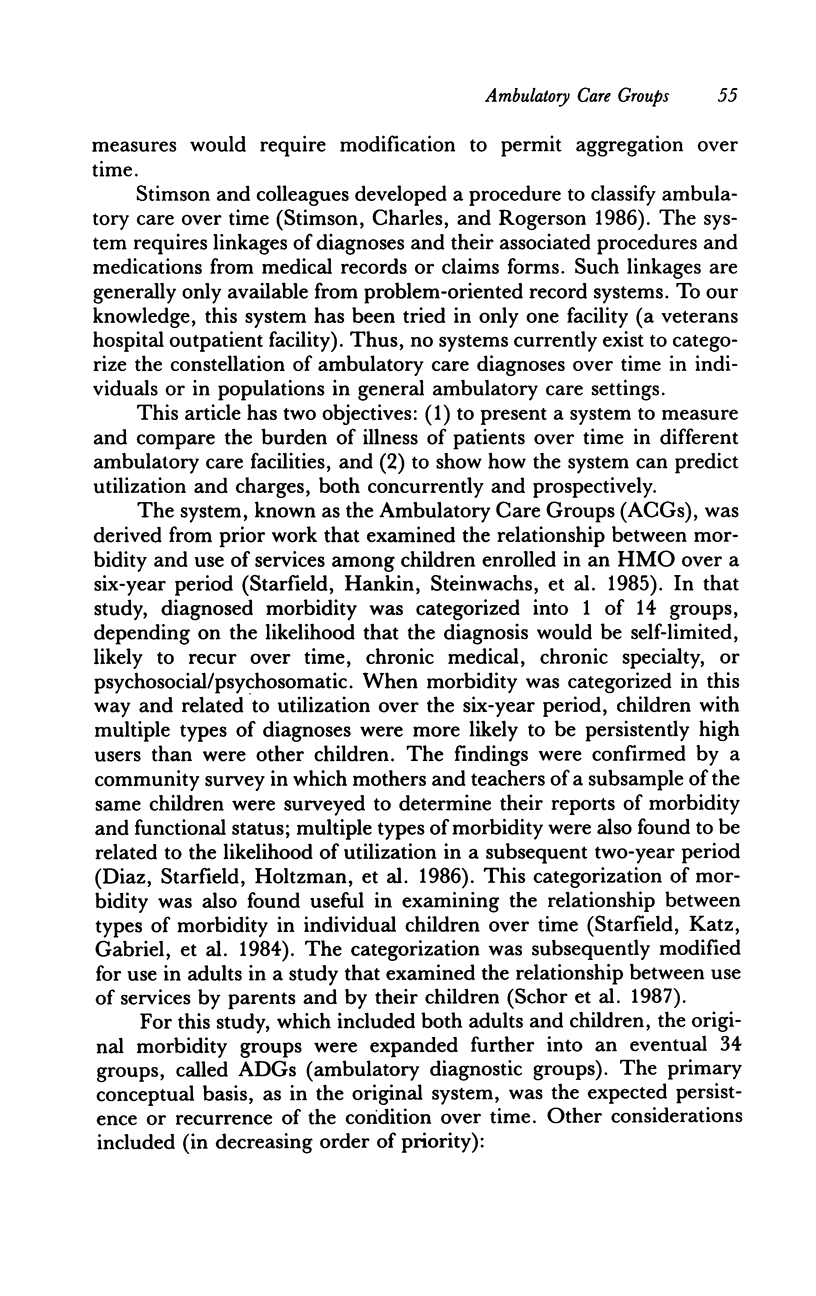


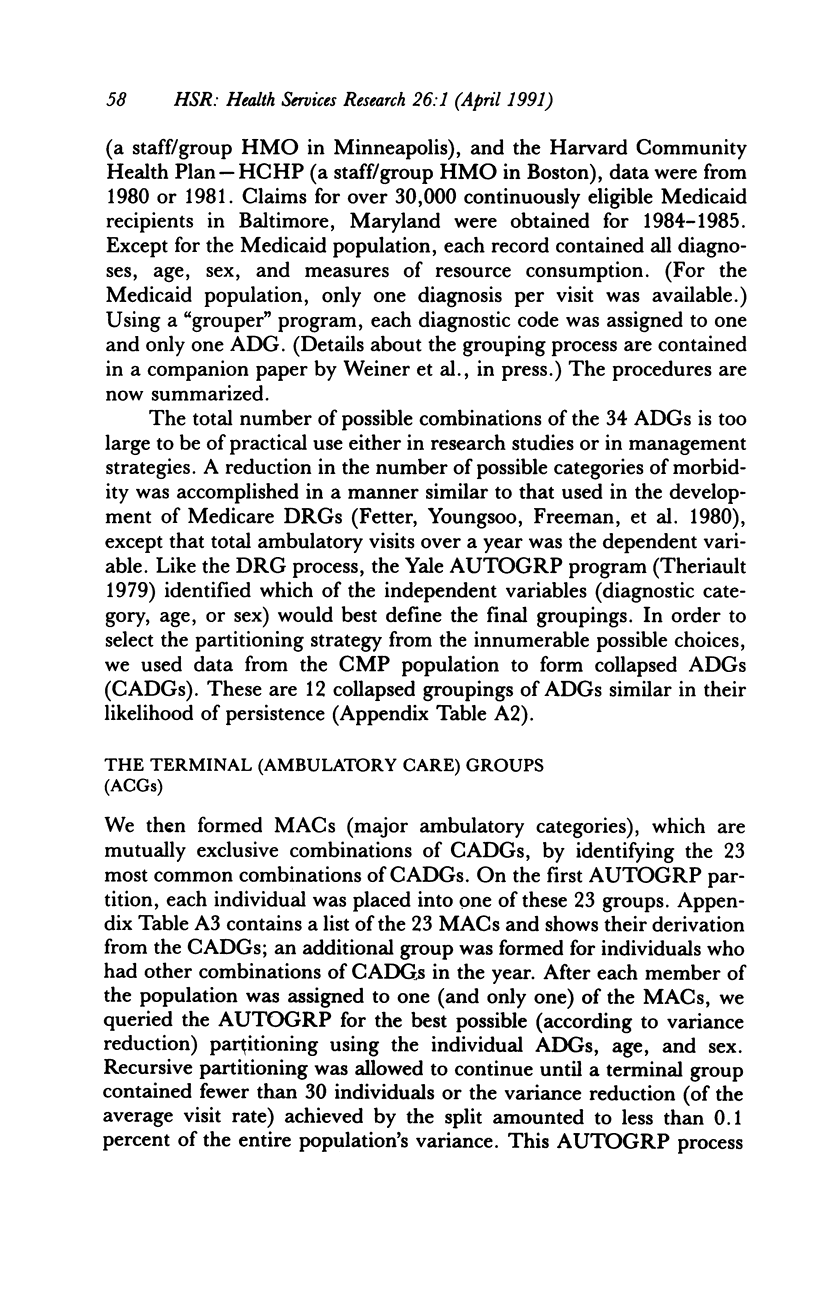




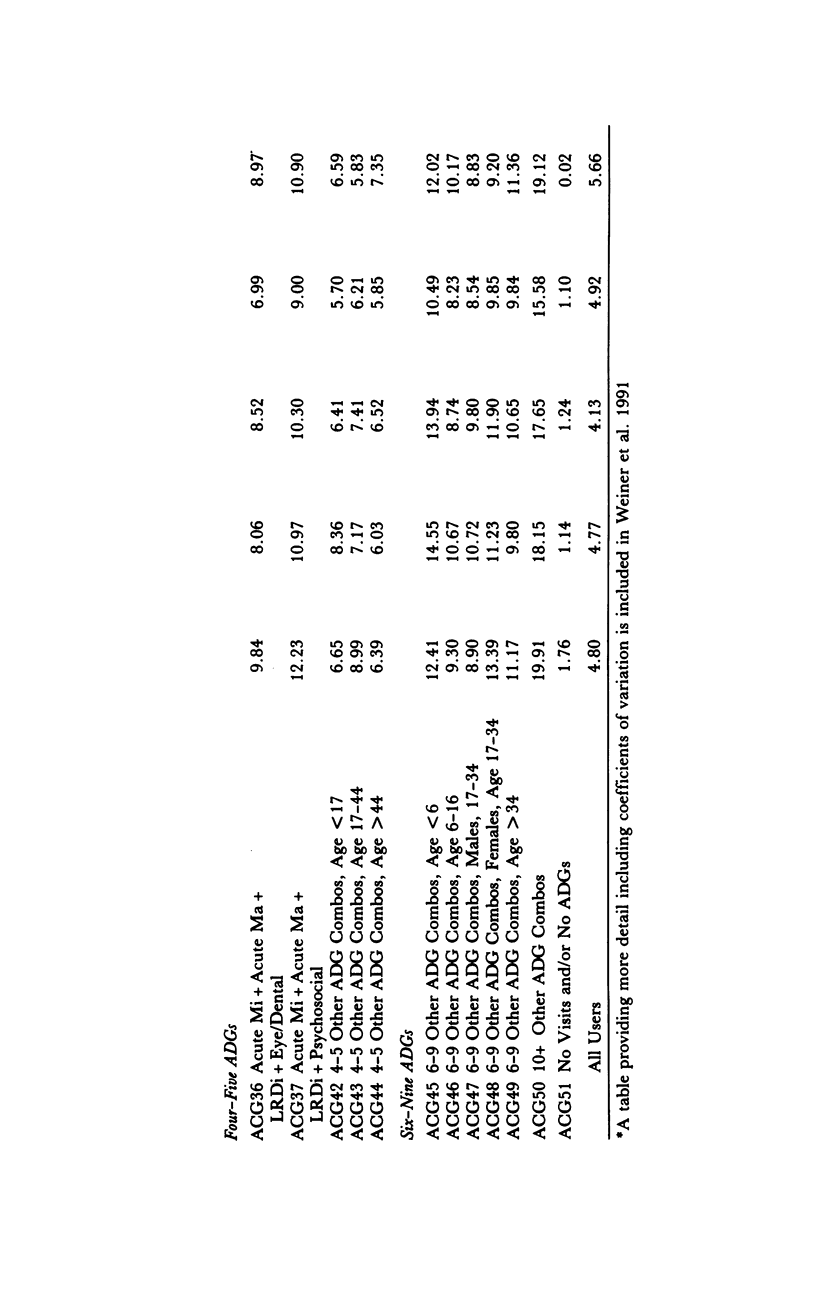




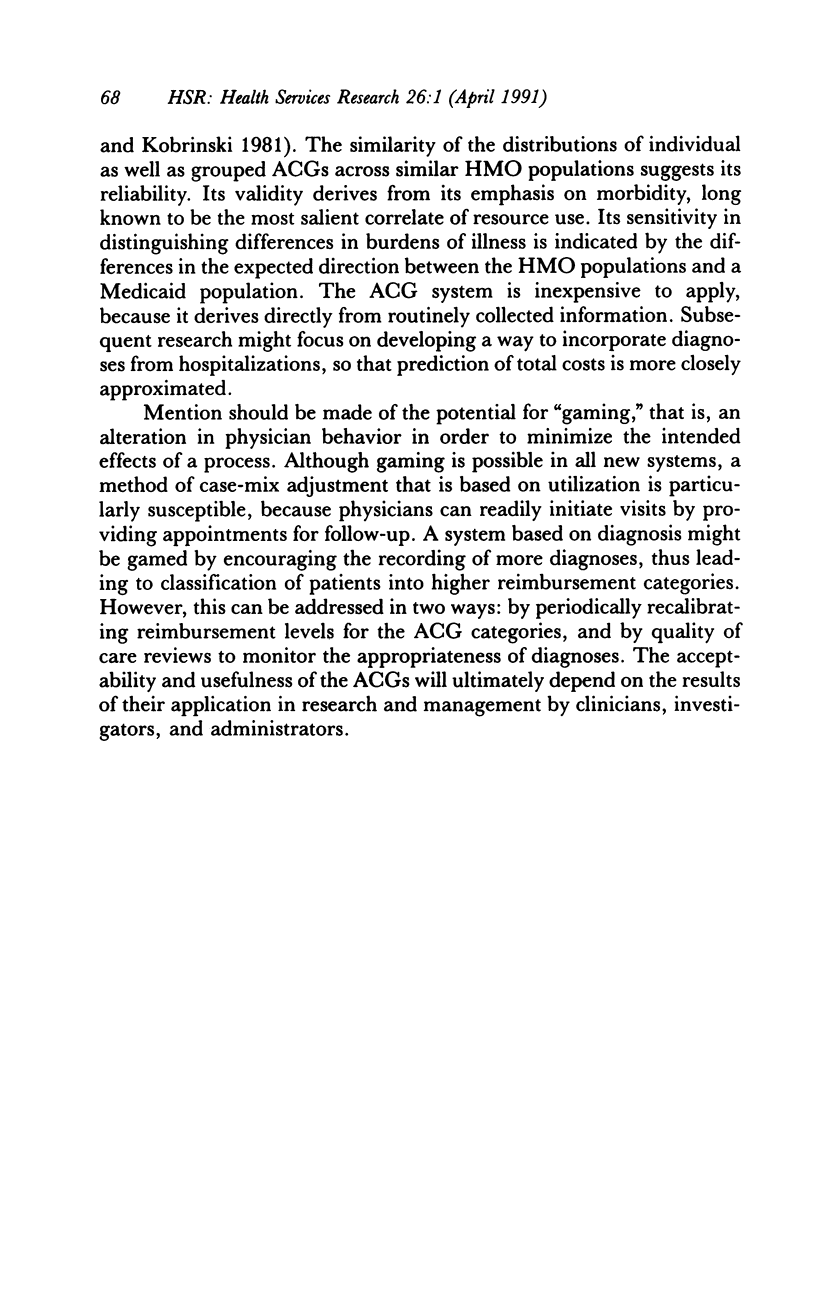

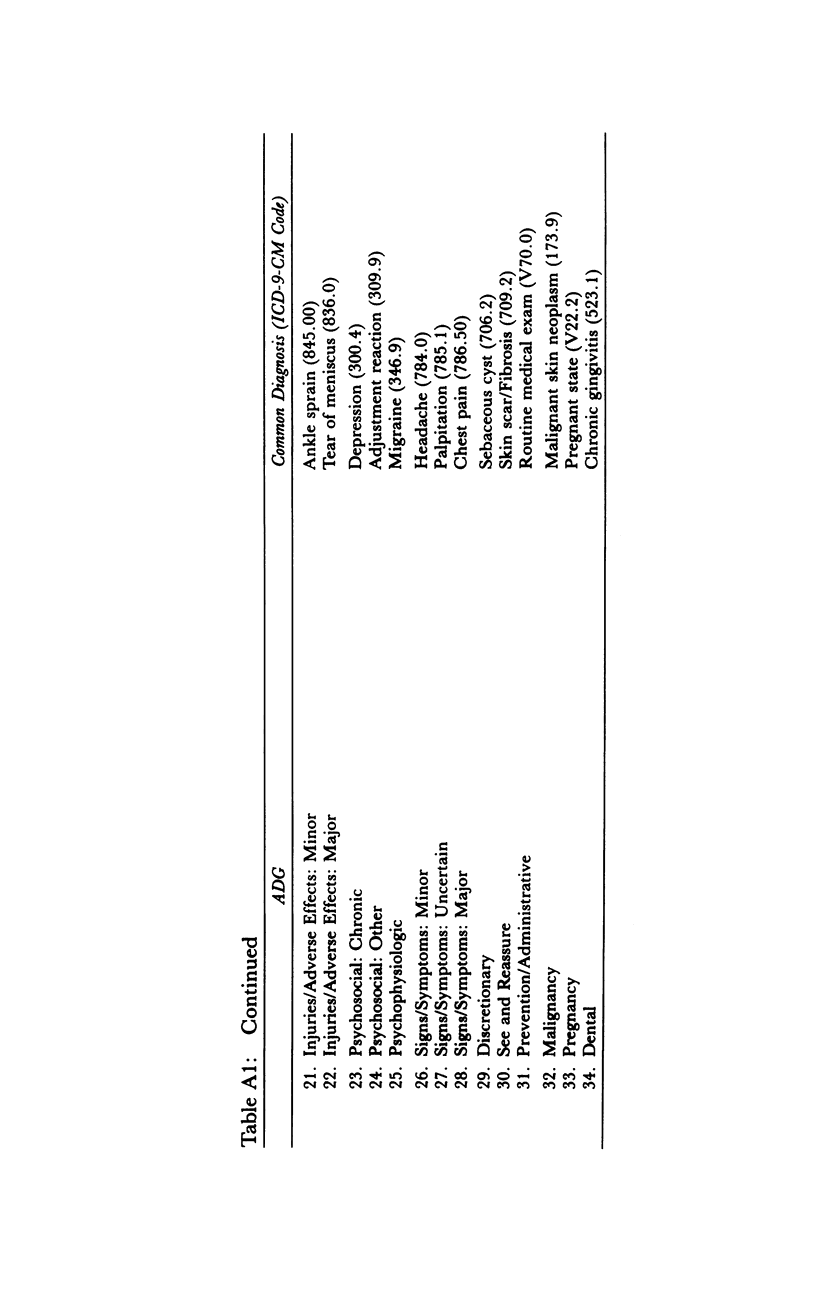



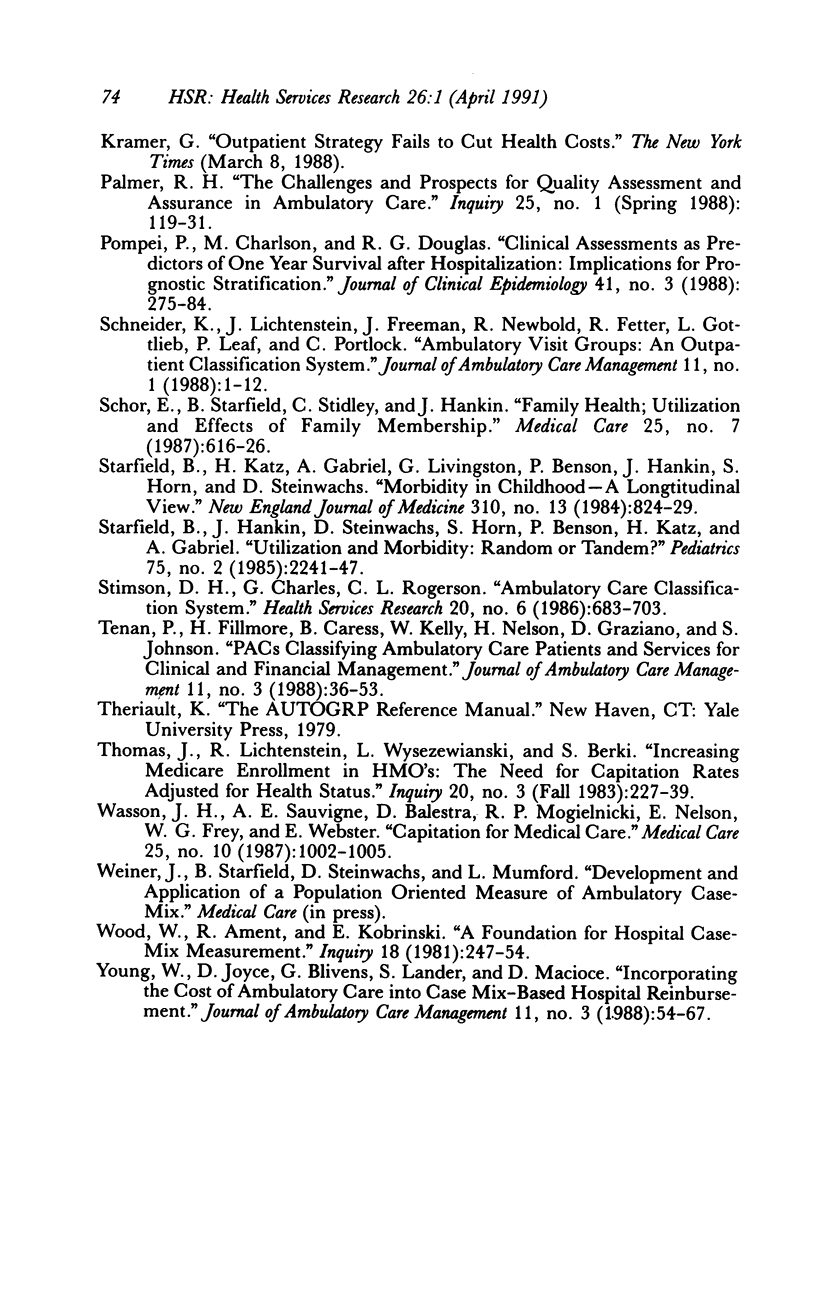
Selected References
These references are in PubMed. This may not be the complete list of references from this article.
- Anderson G. F., Cantor J. C., Steinberg E. P., Holloway J. Capitation pricing: adjusting for prior utilization and physician discretion. Health Care Financ Rev. 1986 Winter;8(2):27–34. [PMC free article] [PubMed] [Google Scholar]
- Anderson G. F., Steinberg E. P., Holloway J., Cantor J. C. Paying for HMO care: issues and options in setting capitation rates. Milbank Q. 1986;64(4):548–565. [PubMed] [Google Scholar]
- Anderson G., Knickman J. R. Patterns of expenditures among high utilizers of medical care services. The experience of Medicare beneficiaries from 1974 to 1977. Med Care. 1984 Feb;22(2):143–149. doi: 10.1097/00005650-198402000-00005. [DOI] [PubMed] [Google Scholar]
- Diaz C., Starfield B., Holtzman N., Mellits E. D., Hankin J., Smalky K., Benson P. Ill health and use of medical care. Community-based assessment of morbidity in children. Med Care. 1986 Sep;24(9):848–856. doi: 10.1097/00005650-198609000-00006. [DOI] [PubMed] [Google Scholar]
- Gold M. Common sense on extending DRG concepts to pay for ambulatory care. Inquiry. 1988 Summer;25(2):281–289. [PubMed] [Google Scholar]
- Greenfield S., Aronow H. U., Elashoff R. M., Watanabe D. Flaws in mortality data. The hazards of ignoring comorbid disease. JAMA. 1988 Oct 21;260(15):2253–2255. [PubMed] [Google Scholar]
- Horn S. D., Buckle J. M., Carver C. M. Ambulatory severity index: development of an ambulatory case mix system. J Ambul Care Manage. 1988 Nov;11(4):53–62. doi: 10.1097/00004479-198811000-00009. [DOI] [PubMed] [Google Scholar]
- Hornbrook M. C. Hospital case mix: its definition, measurement and use. Part II: Review of alternative measures. Med Care Rev. 1982 Summer;39(2):73–123. doi: 10.1177/107755878203900201. [DOI] [PubMed] [Google Scholar]
- Palmer R. H. The challenges and prospects for quality assessment and assurance in ambulatory care. Inquiry. 1988 Spring;25(1):119–131. [PubMed] [Google Scholar]
- Pompei P., Charlson M. E., Douglas R. G., Jr Clinical assessments as predictors of one year survival after hospitalization: implications for prognostic stratification. J Clin Epidemiol. 1988;41(3):275–284. doi: 10.1016/0895-4356(88)90132-1. [DOI] [PubMed] [Google Scholar]
- Schneider K. C., Lichtenstein J. L., Freeman J. L., Newbold R. C., Fetter R. B., Gottlieb L., Leaf P. J., Portlock C. S. Ambulatory visit groups: an outpatient classification system. J Ambul Care Manage. 1988 Aug;11(3):1–12. doi: 10.1097/00004479-198808000-00002. [DOI] [PubMed] [Google Scholar]
- Schor E., Starfield B., Stidley C., Hankin J. Family health. Utilization and effects of family membership. Med Care. 1987 Jul;25(7):616–626. [PubMed] [Google Scholar]
- Starfield B., Katz H., Gabriel A., Livingston G., Benson P., Hankin J., Horn S., Steinwachs D. Morbidity in childhood--a longitudinal view. N Engl J Med. 1984 Mar 29;310(13):824–829. doi: 10.1056/NEJM198403293101305. [DOI] [PubMed] [Google Scholar]
- Stimson D. H., Charles G., Rogerson C. L. Ambulatory care classification systems. Health Serv Res. 1986 Feb;20(6 Pt 1):683–703. [PMC free article] [PubMed] [Google Scholar]
- Tenan P. M., Fillmore H. H., Caress B., Kelly W. P., Nelson H., Graziano D., Johnson S. C. PACs: classifying ambulatory care patients and services for clinical and financial management. J Ambul Care Manage. 1988 Aug;11(3):36–53. doi: 10.1097/00004479-198808000-00005. [DOI] [PubMed] [Google Scholar]
- Thomas J. W., Lichtenstein R., Wyszewianski L., Berki S. E. Increasing Medicare enrollment in HMOs: the need for capitation rates adjusted for health status. Inquiry. 1983 Fall;20(3):227–239. [PubMed] [Google Scholar]
- Wasson J. H., Sauvigne A. E., Balestra D., Mogielnicki R. P., Nelson E., Frey W. G., Webster S. Capitation for medical care. The importance of health status in older patients. Med Care. 1987 Oct;25(10):1002–1006. [PubMed] [Google Scholar]
- Wood W. R., Ament R. P., Kobrinski E. J. A foundation for hospital case mix measurement. Inquiry. 1981 Fall;18(3):247–254. [PubMed] [Google Scholar]


